Glyphosate in Food: Avoid These Contaminated Products
Glyphosate is a chemical found in some weed killers used by farmers. It is estimated that more than 80% of Americans are exposed to glyphosate. Find out which food products are contaminated with this chemical and how to limit your exposure.
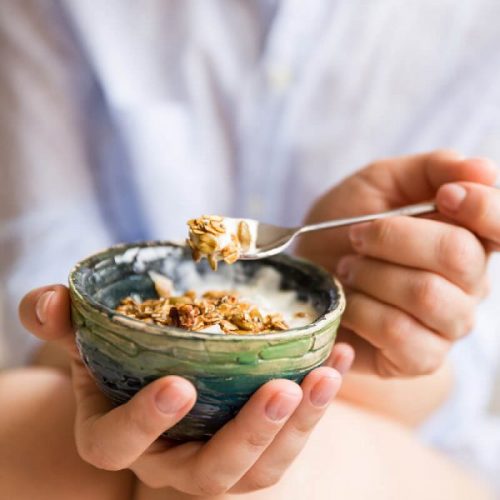
- 81% of Americans have had recent exposure to glyphosate.
- The volume of glyphosate applied to crops has increased 100-fold since the late 1970s.
- The introduction of glyphosate-resistant crops in 1996 added to the exposure.
- Roundup is the most widely used herbicide in the world.
- Bayer will stop selling Roundup in 2023, citing risks to farmworkers and consumers.
- One study found glyphosate in more than 95% of the oat-based food samples.
What Is Glyphosate?
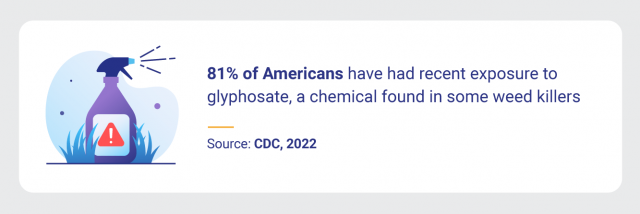
Glyphosate is the active chemical ingredient in glyphosate-based herbicides. One of the most common is the weed killer Roundup. Introduced to the marketplace in 1974, initial toxicity testing results led to an assumption that GBHs posed fairly low risks to humans and other species.
Due to those findings, regulatory agencies around the world set high acceptable exposure limits. The volume of glyphosate applied to crops has increased exponentially since the late 1970s, broadening Americans’ exposure to the chemical. It is now the most widely used herbicide in the world. The rise of glyphosate-resistant crops in 1996 also added to the increased exposure.
Farmers rely on herbicides like Roundup due to their effectiveness in combating weeds. Invasive plant life such as weeds can be highly detrimental to large crops. Glyphosate-resistant crops effectively block an enzyme essential for plant growth, allowing farmers to target weeds.
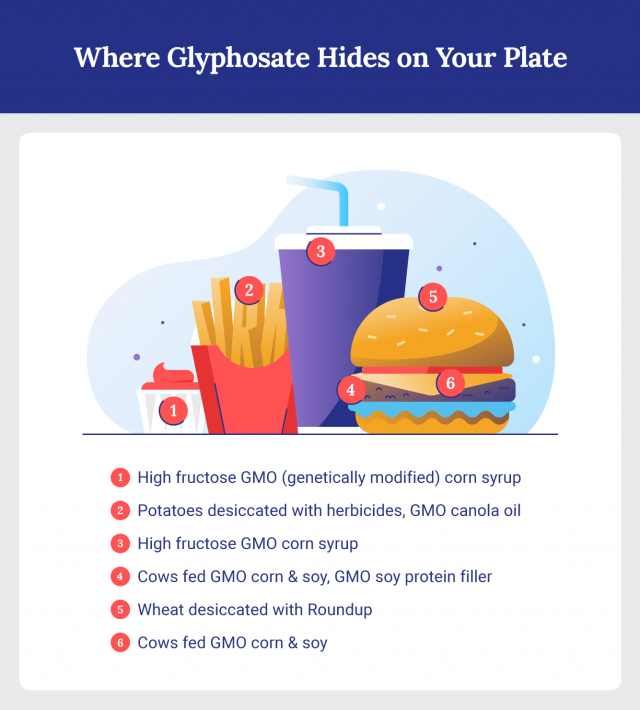
Is Glyphosate Dangerous?
In short, there is a need for more scientific data. Over the last two decades, researchers have begun to take a closer look at the impact of glyphosate toxicity, but have come up with conflicting evidence.
In 2016, the World Health Organization announced it had determined glyphosate is “probably carcinogenic.” In contrast, the Environmental Protection Agency consistently maintains that its scientists have found that “glyphosate is not likely to be carcinogenic to humans.”
Hearing such drastically different findings makes it hard for the American public to choose which one to believe. More studies are necessary to settle the debate.
It is interesting to note, however, that Bayer, the company that owns the Roundup brand, announced in 2021 that it would cease selling Roundup in the residential lawn and garden market in 2023. It cited the risks to farmworkers and consumers from exposure to this toxic pesticide as the primary reason for the decision.
This announcement came just two years after the company was ordered to pay more than $80 million in damages to a man who claimed in a Roundup lawsuit that the product caused his non-Hodgkin lymphoma.
Tips To Avoid Glyphosate in Food
Learning how to avoid glyphosate in food will enable you to make more informed decisions about your diet. There are four steps you can take immediately to begin limiting your intake of glyphosate.
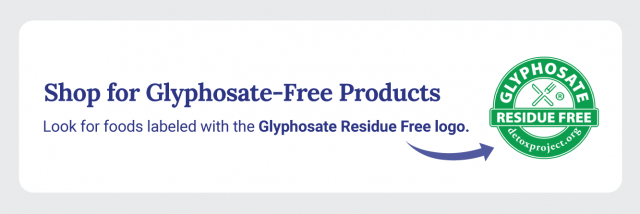
1. Look for Glyphosate Residue Free Label
An organization known as the Detox Project created a certification process to officially verify that products are free from glyphosate contamination. It uses an accredited third-party laboratory to test manufacturers’ and farm suppliers’ products to make sure their items do not contain glyphosate residues. Once completed, the certification is valid for one year.
2. Review List of Glyphosate-Free Products
The Detox Project has already begun to certify products as Glyphosate Residue Free. You can peruse its list of certified Glyphosate Residue Free products to find items that may be a quality substitute for the contaminated item you no longer wish to purchase.
3. Buy Organic Whenever Possible
Organic produce inherently offers an opportunity to avoid glyphosate because certified organic produce is grown without chemicals from any herbicides or pesticides. Eating organic foods is not a complete fix for this problem, but it can help heavily reduce exposure to glyphosate. One recent study found that people who ate an all-organic diet for just six days reduced the amount of glyphosate in their bodies by 70%.
4. Avoid Using Weed Killer on Produce
When growing your own produce, choose not to use Roundup in your garden. There are many ways to find alternatives to Roundup — some organic products on the market work well, and there are do-it-yourself recipes you can try making at home.
Glyphosate Foods To Avoid
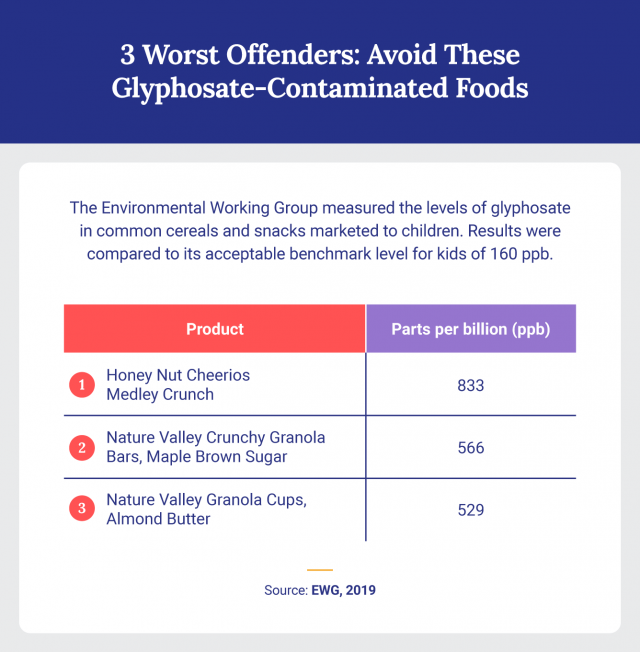
When studying the prevalence of glyphosate in certain foods, the numbers can be shocking. For example, one study from the Environmental Working Group revealed that glyphosate was present in more than 95% of popular oat-based food samples. A follow-up study identified cereals targeting children as some of the most glyphosate-contaminated food products. It measured the levels in parts per billion (ppb) and worked with a benchmark for children’s consumption of glyphosate of 160 ppb.
- Honey Nut Cheerios Medley Crunch (833 ppb)
- Nature Valley Crunchy Granola Bars, Maple Brown Sugar (566 ppb)
- Nature Valley Granola Cups, Almond Butter (529 ppb)
- Chocolate Peanut Butter Cheerios (400 ppb)
- Nature Valley Baked Oat Bites (389 ppb)
- Nature Valley Crunchy Granola Bars, Oats and Honey (320 ppb)
- Nature Valley Crunchy Granola Bars, Peanut Butter (312 ppb)
- Nature Valley Granola Cups, Peanut Butter Chocolate (297 ppb)
- Nature Valley Fruit & Nut Chewy Trail Mix Granola Bars, Dark Chocolate Cherry (275 ppb)
- Nature Valley Protein Granola, Oats and Dark Chocolate (261 ppb)
- Multi Grain Cheerios (216 ppb)
- Nature Valley Soft-Baked Oatmeal Squares, Blueberry (206 ppb)
- Fiber One Soft-Baked Cookies, Oatmeal Raisin (204 ppb)
- Nature Valley Granola, Peanut Butter Creamy & Crunchy (198 ppb)
- Nature Valley Biscuits with Almond Butter (194 ppb)
Safest Poison-Free Foods
The Environmental Working Group puts out an annual list of the “Clean Fifteen,” which are the 15 fruits and vegetables with the lowest amounts of any pesticide residues according to USDA data. Of this list, just under 70% of the samples had zero detectable pesticide residues.
- Avocados
- Sweet corn
- Pineapple
- Onions
- Papaya
- Sweet peas (frozen)
- Asparagus
- Honeydew melon
- Kiwi
- Cabbage
- Mushrooms
- Cantaloupe
- Mangoes
- Watermelon
- Sweet potatoes
These tips on eating cleaner and greener can help minimize your exposure to glyphosate and other pesticides.

Protecting ourselves and our loved ones from the hidden dangers of glyphosate toxicity requires awareness and planning. While the health risks of glyphosate in food have not been definitively proven, there has been enough convincing evidence for a multitude of Roundup lawsuits seeking justice for those who’ve been injured as a result.
12 Cited Research Articles
Consumernotice.org adheres to the highest ethical standards for content production and references only credible sources of information, including government reports, interviews with experts, highly regarded nonprofit organizations, peer-reviewed journals, court records and academic organizations. You can learn more about our dedication to relevance, accuracy and transparency by reading our editorial policy.
- Ospina, M. et al. (2022, December). Exposure to glyphosate in the United States: Data from the 2013–2014 National Health and Nutrition Examination Survey. Retrieved from https://www.sciencedirect.com/science/article/pii/S0160412022005475
- U.S. EPA. (2022, September 23). Glyphosate. Retrieved from https://www.epa.gov/ingredients-used-pesticide-products/glyphosate
- U.S. FDA. (2022, February 28). Questions and Answers on Glyphosate. Retrieved from https://www.fda.gov/food/pesticides/questions-and-answers-glyphosate
- Soares, D. et al. (2021, November). Glyphosate Use, Toxicity and Occurrence in Food. Retrieved from https://www.ncbi.nlm.nih.gov/pmc/articles/PMC8622992/
- Center for Food Safety. (2021, July 29). Monsanto-Bayer to End U.S. Residential Sales of Toxic Pesticide Glyphosate. Retrieved from https://www.centerforfoodsafety.org/press-releases/6421/monsanto-bayer-to-end-us-residential-sales-of-toxic-pesticide-glyphosate
- Wilcox, M. (2020, August 11). Organic diets quickly reduce the amount of glyphosate in people’s bodies. Retrieved from https://www.ehn.org/glyphosate-organic-food-2646939278.html
- Hirsh, S. (2019, March 29). Monsanto's Roundup Loses Second Cancer Case, With 11,000 More to Come. Retrieved from https://www.greenmatters.com/p/monsanto-ordered-to-pay-dollar80-million-to-man-who-got-cancer-from-roundup
- Naidenko, O. & Temkin, A. (2019, June 19). In New Round of Tests, Monsanto’s Weedkiller Still Contaminates Foods Marketed to Children. Retrieved from https://www.ewg.org/childrenshealth/monsanto-weedkiller-still-contaminates-foods-marketed-to-children
- Naidenko, O. & Temkin, A. (2019, February 28). Glyphosate Contamination in Food Goes Far Beyond Oat Products. Retrieved from https://www.ewg.org/news-insights/news/glyphosate-contamination-food-goes-far-beyond-oat-products
- World Health Organization. (2017). IARC Monograph on Glyphosate. Retrieved from https://www.iarc.who.int/featured-news/media-centre-iarc-news-glyphosate/
- Peterson Myers, J. et al. (2016, February 17). Concerns over use of glyphosate-based herbicides and risks associated with exposures: a consensus statement. Retrieved from https://www.ncbi.nlm.nih.gov/pmc/articles/PMC4756530/
- The Detox Project. (n.d.) Glyphosate Residue Free. Retrieved from https://detoxproject.org/certification/glyphosate-residue-free/
Calling this number connects you with a Consumer Notice, LLC representative. We will direct you to one of our trusted legal partners for a free case review.
Consumer Notice, LLC's trusted legal partners support the organization's mission to keep people safe from dangerous drugs and medical devices. For more information, visit our partners page.
855-605-1792
